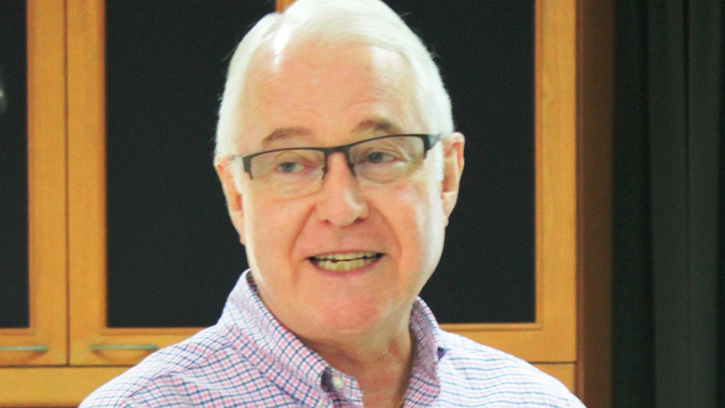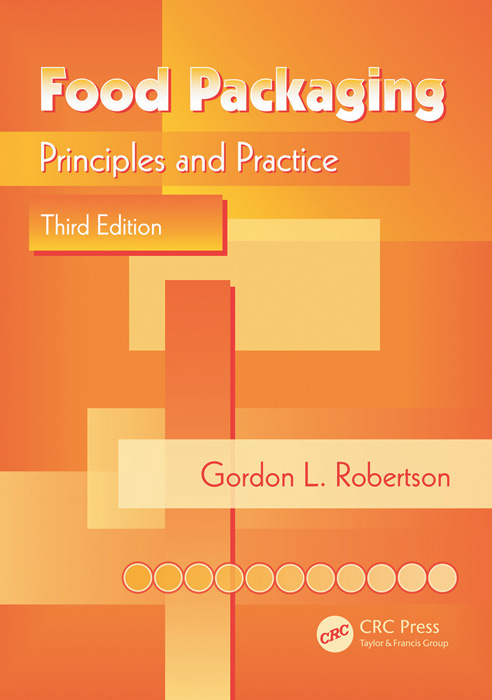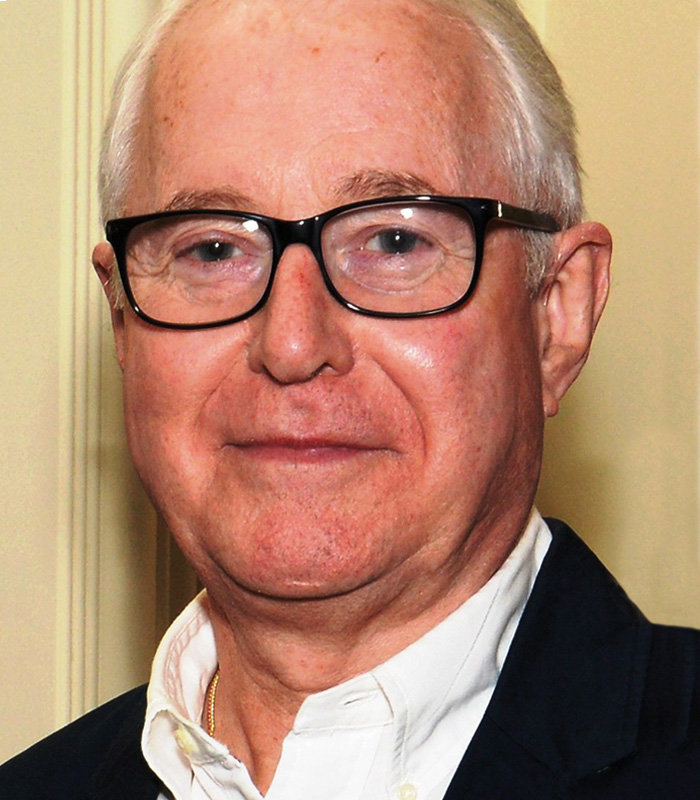Gordon Robertson: Rational Thoughts on Sustainable Packaging
Packaging | APPLIED SCIENCE
Gordon Robertson’s unique blend of experiences in industry and academia has given him a view of food packaging science that is both realistic and nuanced.
As Foundation Professor of Packaging Technology at Massey University in New Zealand, Robertson taught food packaging to students for 21 years. And as vice president for environmental and external affairs for Tetra Pak at its Asia regional headquarters during the 90s, the New Zealand native focused on sustainability initiatives. His landmark textbook, Food Packaging: Principles and Practice, has been a staple at universities and within the industry since 1992 and is now in its third edition in three languages.
For the past 15 years, Robertson has continued to contribute to the food packaging industry as adjunct professor in the School of Agriculture and Food Sciences at the University of Queensland in Australia and has taught more than 600 students through food packaging and shelf-life workshops in more than 10 countries.
Robertson recently spoke to Food Technology about the realities of developing sustainable food packaging, sharing his ideas on the most important food packaging challenges and research opportunities right now.
This interview was edited for clarity and brevity.
Q: Where do you think food packaging researchers should be focusing their efforts during the next five years?
Robertson: After eight years as associate editor of Packaging Technology and Science, if I see another paper on biobased, biodegradable films, antimicrobial films containing essential oils, or nanocomposites in plastics, I will probably scream. There is so much repetition in today’s published food packaging papers. If real meaningful advances are to be made, innovative ideas and research approaches are sorely needed. Academics need to get out and mix with food packaging professionals to understand what the real challenges are today.
Important areas like modified atmosphere packaging, aseptic packaging, and microwaveable packaging are well-established, and now new areas such as MATS (microwave-assisted thermal sterilization) are being commercialized. The excellent collaboration between MATS food engineers and packaging suppliers to develop optimal packaging is an outstanding example that should be followed by others.
In addition, there have been many, many attempts to develop economically viable shelf-life indicators for primary packaging to guide consumers on what product is safe to eat and prevent food waste. However, few have performed reliably at a commercially acceptable cost. This area must continue to be a research priority.
Q: What exactly is it about biodegradable food packaging research that makes you want to let loose and scream?
Robertson: Many academics appear to think that they can help the environment by developing a biobased, biodegradable film, and many of their graduate students have been set this task—which is not that difficult. However, converting a laboratory-developed film into a commercially viable packaging material is hugely expensive and time-consuming. To appreciate this effort and expense, we can reflect on the development of polyethylene furanoate, a wonderful, biobased polymer that is close to market release after almost 20 years of intense work.
It always surprises me that so many food science researchers in academia start from the position that biodegradation is essential for any packaging material, without critically examining the basis of this assumption. Glass and metal packaging materials do not biodegrade, and neither do most plastics. Biodegradation and composting of packaging materials result in the conversion of a solid into greenhouse gases, in sharp contrast to conserving packaging material via recycling.
Q: With your blend of industry and academic experience, you are quite refreshingly rational in terms of thinking about developing more sustainable food packaging. Why do you think a more rational approach can be successful here?
Robertson: Sustainable packaging is the topic du jour that dominates conferences, trade magazines, published literature, and social media. Despite attempts by many to provide a meaningful definition, it essentially means whatever the current user of the term wants it to mean. This has led to huge confusion (much of it intentional, I suspect) concerning plastics, bioplastics, and compostable packaging.
The paper industry has been quick to capitalize on this irrational hatred of plastics by offering paper substitutes that often don’t provide the same barrier properties as plastics and thus result in a reduced shelf life. So they are not viable replacements for plastic. The sheer quantity of greenwashing in this area is out of control, and the Federal Trade Commission really needs to step up and put a stop to it.
Adopting simplistic approaches to sustainable packaging is not helpful and can actually be counterproductive. For example, last year a company that marketed a package made from 100% recycled PET [polyethylene terephthalate] received an international award for having developed a sustainable package. If only it was that simple!
When a UK supermarket recently switched from HDPE [high-density polyethylene] bottles to cartons for milk, there was online outrage because the cartons have a much lower recycling rate than the HDPE bottles. However, recycling rate is not a reliable indicator of environmental impacts such as carbon footprint. A life cycle assessment confirms that 90% of the impacts occur before end of life (EOL) options such as recycling.
While there is much talk about a circular economy, the brutal reality is that most used packages have a negative value at their EOL, and therefore money (and energy) is required to collect, sort, and recycle them. At the risk of being accused of heresy, disposing of them in a modern sanitary landfill is the most environmental and economical option in many cases. Achieving high recycling rates for most packaging materials will require huge subsidies, which ultimately will be paid for by consumers. And the environmental and economic costs may exceed any benefits.
Q: Do you think the renewed extended producer responsibility (EPR) movement within the United States and Canada will lead to improved packaging sustainability?
Robertson: Extended producer responsibility is the term used to describe laws that mandate responsibilities for manufacturers/brand owners for EOL management of their products. EPR shifts EOL financial—and sometimes physical—responsibility upstream to the producers and away from the public sector, and it can provide incentives to producers to incorporate environmental considerations into the design of their products and packaging. According to proponents of EPR, the benefits can include dedicated, nontaxpayer funding to sustainably support recovery and recycling, and a more consistent and predictable system that enables states to take a more unified approach to strategic planning around recycling. It typically leads to increased investment in end markets and recycling infrastructure, but at heart it is often little more than a subsidy of municipal waste management by industry.
Relieving consumers of responsibility in the disposal of used packaging, and making producers responsible, decouples consumers from the environmental aspects associated with product selection. Indeed, the EPR concept does not apply to all waste, e.g., chicken farmers do not have to pay for the disposal of chicken bones, nor clothing manufacturers for the disposal of used clothing. Despite these criticisms, EPR is an established concept for packaging in the European Union and is being actively promoted in several other countries.
Q: How did you originally discover the field of food packaging?
Robertson: When I was appointed a lecturer in food processing at Massey University in 1971, the first lectures I gave were on food packaging. As I started preparing them, I realized that it was impossible to do justice to the topic in just six lectures, and so I increased it to 12 the following year and even further in subsequent years. The more involved I got, the more I came to appreciate just what a critical role food packaging plays in the food industry.
Q: In your textbook Food Packaging: Principles and Practice, why was it important to provide chapters on choosing packaging for specific kinds of food?
Robertson: One of the features of the book that has contributed to its popularity is that there are chapters on selecting the most appropriate packaging for many types of food groups. It’s very important to know about packaging materials, but to really understand how the desired shelf life can be achieved, knowledge of how foods deteriorate and which packaging systems might prevent or slow down the deterioration is needed. To highlight the important relationship between packaging and shelf life, in 2010 I edited a book titled Food Packaging and Shelf Life, which has also been well-received. I also convinced the publisher Elsevier that a journal of the same title would be viable and well supported, and so it has proved.
Q: Looking ahead, what do you see as some of the biggest sustainability challenges facing the global food packaging industry?
Robertson: There is a push to incorporate recycled plastic and paper in food contact packaging materials to fuel the circular economy. However, there is a need to have a better understanding of the risks from undesirable contaminants in the food packaging made from the recyclate. While the tracking and analytical challenges to screen for contaminants in recyclate are formidable, this analysis is imperative from a food safety standpoint. If due diligence to identify and then remove contaminants from recyclate is not performed, consumer and industry trust in recycled packaging will erode, and this will ultimately reduce the use of—and thereby the market for—recycled content.
An associated challenge is convincing consumers and policymakers that packaging prevents food waste. The industry needs to publicize well-documented case studies that demonstrate the positive role of packaging in preventing and minimizing food waste. Only negative stories about excessive packaging ever seem to reach consumers.
Another challenge relates to EOL options for food packaging. Chemical recycling is being scaled up, and regenerative gasification may yet prove to be a cost-effective process. Reuse is being promoted by some advocates, and while the theoretical advantages are impressive, changing well-ingrained consumer habits to reduce or eliminate packaging they use now will present immense challenges.
The circular economy is being heavily promoted by the World Economic Forum and the Ellen MacArthur Foundation, and food packaging scientists in industry must get involved in the discussions on this important topic to ensure that common sense and food safety prevail.
Vital Statistics
Credentials: BTech, MTech, and PhD, Food Technology, Massey University, New Zealand
Career Highlights: Internationally recognized expert on food packaging. IFT Fellow. IFT Food Packaging Award in Honor of Don Riester, Rees Davis, and Aaron Brody. International Academy of Food Science and Tech-nology Fellow. Editorial board member of Packaging Technology and Science and Food Packaging and Shelf Life. More than 50 years’ experience teaching and working in food packaging
Fun Fact: Robertson has visited almost 100 materials recovery and recycling facilities around the world but has no desire to revisit them.
LinkedIn: linkedin.com/in/gordon-robertson-0552157/?originalSubdomain=au






